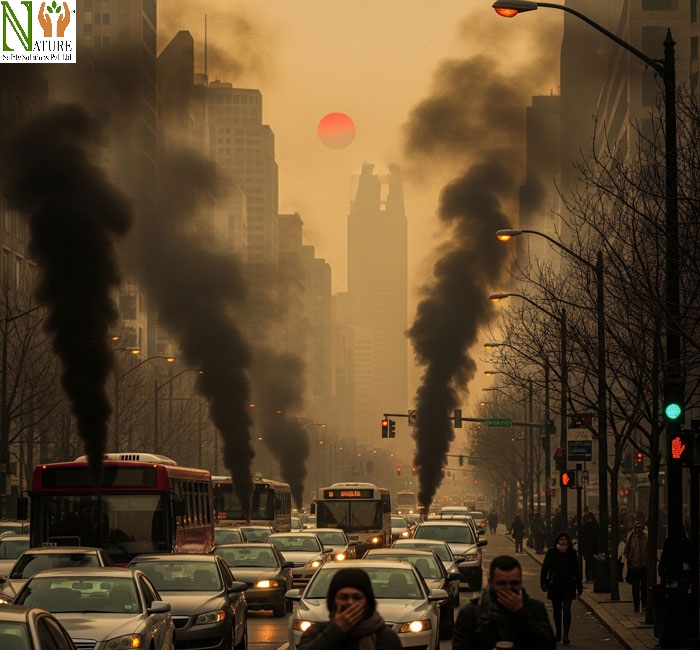Across the world, cities are growing rapidly. More people mean more vehicles on the road. Every day, millions of vehicles move through our cities—cars, buses, trucks, motorcycles. While they keep us connected and our economy running, they are also silently polluting the air we breathe.
The smoke that comes out of exhaust pipes contains harmful gases and tiny particles that mix into the air, creating a deadly cocktail of pollution. This growing problem is affecting our health, harming the environment, and making our cities harder to live in.

What Happens When Vehicles Pollute?
When fuel burns in a vehicle’s engine, it produces several harmful substances. These gases mix into the air and slowly spread through streets and neighborhoods. You may not see them, but you might notice your eyes watering near traffic, or a cough that gets worse in the city.
That’s the result of breathing polluted air. Over time, these emissions can build up and stay trapped around city buildings, making the air we breathe more dangerous each day.
Why Cities Are at Risk
Urban areas are hotspots for vehicle emissions. With constant traffic, little green space, and tall buildings that block airflow, the pollution has nowhere to go. Morning and evening rush hours are the worst times, as thousands of engines fill the air with smoke and fumes.
Even people who don’t drive are affected—children walking to school or vendors working by the roadside breathe in this toxic air daily. Over time, the city starts to feel heavy, dusty, and unhealthy.
The Harm to Human Health
The effects of vehicle emissions on health are serious. Breathing polluted air can cause breathing problems, especially for people with asthma or weak lungs.
Long-term exposure can even lead to heart problems, lung infections, or cancer. Children and older adults are the most vulnerable, but no one is fully safe. Even healthy people may feel tired, dizzy, or short of breath after spending time in traffic-heavy areas.
A Bigger Problem: Climate Change
Beyond human health, vehicle emissions are warming the planet. Cars and trucks release carbon dioxide, a gas that traps heat in the atmosphere. This leads to higher temperatures, especially in cities.
Heatwaves are becoming more common, and unusual weather events—like heavy rains or dry spells—are happening more often. In short, the way we travel is helping to change the Earth’s climate, and not for the better.
Our Cities Are Changing
It’s not just the air that suffers. Pollution changes how our cities look and feel. Smog covers skylines, and dust settles on windows, buildings, and trees. People avoid walking or cycling, and instead rely more on vehicles—adding to the problem. Green spaces shrink to make way for more roads, while the city becomes noisier, dirtier, and more stressful to live in.
What We Can Do
There are simple ways to reduce the damage. Cities can invest in better public transport systems, so fewer people need to drive. Clean alternatives like cycling and walking should be made safer and easier.
Electric vehicles, which don’t pollute the air, can replace old, fuel-burning ones. At the same time, people can help by using their cars less, maintaining their engines properly, and supporting clean-air policies.
Also read:-
